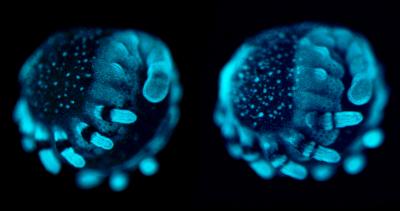In a new study, Nikola-Michael Prpic et al. have identified the driving force behind the evolution of a leg novelty first found in spiders: knees.
With eight hairy legs and seven joints on each---that's a lot of joints for a spider to coordinate in order to take even a single step. To find some answers, Prpic's research team honed in on a gene called dachshund (dac). The gene was first discovered in fruit flies, and the discoverers named the missing leg segments and shortened legs that result from dac mutant flies after the short-legged dog breed of the same name.
What is intriguing is that arachnids are different than flies and other arthropods, possessing a second dac gene. And the dac2 gene is made only in the kneecap, or patella, during spider development.

"Species constantly adapt and evolve by inventing new body features," said Prpic. "Our work shows how a gene can be duplicated and then used during evolution to invent a new morphological feature."




Comments